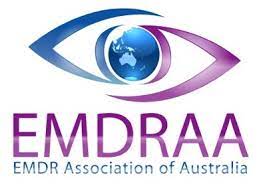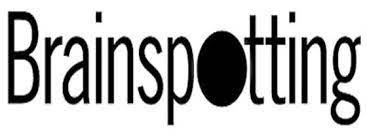Here is a list of terms and definitions that should help form a good basis for the understanding of hypnosis and hypnotherapy.
Abreaction – The expression and emotional discharge of unconscious material, usually during treatment.
Affirmations – The act of repeated assertion of something this program or reprogram unconscious beliefs.
Age Progression – A technique of hypnosis used to guide the subject forward in time to experience the effects of changes.
Age Regression – A technique of hypnosis used to guide the subject back in time (often children) to relive an experience.
Alignment – To reflect the behaviour of a person (usually physically) to walk the same line of vision and reflection in order to establish a good relationship.
Alpha – The state of brain waves associated with a light hypnotic state (8-14Hz) or meditative state early. Alpha experienced when falling asleep and sleep and wake up – even to dream. This relaxed state of consciousness is conducive to independent display lucid and lively. But the most important function that the state of the brain is that it establishes a link between the conscious and the unconscious. Generation of alpha brain waves is necessary to remember dreams upon waking.
Altered States – States of consciousness often during hypnosis, meditation or trance inducing other practices.
Anchor – A programmed stimulation (sight, hearing, speech or touch) that will automatically trigger responses in the subconscious. Example: suggestion programmed that the blue color that makes you feel comfortable.
Anchorage – Placement of unconscious suggestion during hypnosis to establish a trigger that causes the desired response when the trigger is activated.
Animal Magnetism – Originally from Paracelsus and since coined as Anton Mesmer’s doctrine of drawing others in a physical or sensual magnetism.
Associate – see the world from their perspective.
Autosuggestion – suggestions of visitors to program or reprogram your subconscious.
Aversion Therapy – a therapeutic technique that uses suggestions that emphasize the negative aspects of behaviour continued used to change behavior.
Awakening – bringing someone in a trance state in a waking state of alertness.
Behaviour Modification – Modify a pattern.
Beta – Normal wakefulness produced by your thinking mind (12-38 Hz). It is the state we occupy on a minute by minute basis during our waking day.
Brainwaves (or brain waves) – Rhythmic fluctuating electrical pulses measured in hertz (Hz) which is the second cycle. They consist of the: gamma (38-42 Hz), beta (12-38 Hz), alpha (8-12 Hz), theta (3-8 Hz) and delta (0.5-3 Hz). Measuring brain waves, essentially tells us the rate of brain processing.
Cataleptic Trance – A state of trance through hypnosis. The hypnotic state in which the subject is unaware of external stimuli.
Conditioning – A series of suggestions to “condition” of the subconscious mind to be more responsive to specific ideas.
Consistency – When your mind (consciously or unconsciously), feelings and behaviors are consistent with its objectives.
Creative level of the mind – an optimal state of mind in which the process of creation has the potential for maximum efficiency. In addition, the energy force behind the movement and creation in the universe.
Critical Factor – The comparative part of the mind that allows our conscious mind to logical compare incoming information with already accepted belief and knowledge.
Deepening Techniques – Techniques used to deepen a hypnotic trance, such as the arm “stiff” or technical “hands” (and you can not separate them) technique.
Defense mechanism – an unconscious reaction or response, which protects the individual against anxiety-provoking stimuli.
Delta – Brainwave level of deep sleep or coma (0.5-3 Hz).
Direct Suggestion – Suggestion given to a subject as a command.
Float – Viewing the world or an event outside of oneself, of being separated from your consciousness, identity, or physical sensations.
Double Bind – In the presence of two alternative proposals within a sentence, the person may respond to the suggestion than the other suggestion is lower.
Ericksonian Hypnosis – A non-authoritarian branch of hypnosis named after psychiatrist Milton Erickson.
Eye-Fixation Technique – A technique of induction which the subject relates to a fixed point or object. Primarily used by James Braide.
First position – Associate; see things from their perspective.
Fixing Point – The point where the concentration of a door as directed by a hypnotist in the process of hypnosis.
Fractional Induction – An induction technique that relaxes the whole body at once an area of focus the mind and induce deep relaxation state of being.
Gamma – Brainwave level of high brain activity (38-42 Hz).
Gestalt therapy – a therapy developed by Frederick Perls in which the sum or any person is greater than its constituent parts. The person is encouraged to release their emotions and to heal and integrate these parts of themselves they may consider not accepted / unwanted.
Guided imagery – a technique used to concentrate the power of the imagination of an individual in a frame or travel.
Hyper suggestibility – the state of exaggerated suggestibility.
Hypnosis – A state of consciousness characterized by mental relaxation, physical and psychological depth, focused concentration and a slowing of brain activity in an alpha state and some of theta brainwaves. In this state, the highly suggestible subconscious mind comes to mind, while the critical conscience of the trial was a rear seat. Hypnosis is used in medicine, therapy and behaviour modification.
Hypnotherapist – someone trained in the use of hypnosis as a therapeutic tool.
Hypnotherapy – The use of hypnosis as a therapeutic tool. The by-passing of the critical factor in order to establish corrective thinking.
Hypnotism – The theory or practice of hypnosis.
Hypnotist – someone who guides others into a hypnotic state.
Ideomotor Response – The response of the subconscious and manifests itself through fingerprints or other physical media.
Imagery – Using the power of the imagination of people to ignore the conscious mind, critical.
Indirect Suggestion – It is suggested that use of metaphors, analogies to convey a suggestion that may be too difficult for a person to deal directly.
Induction – Part of the process of hypnosis in which the subject is guided into a hypnotic state of deep relaxation. A variety of induction techniques.
Kinaesthetic – Regarding the sense of touch or feeling.
Kindergarten Hypnotist – A hypnotist who uses a soft, approaching parenthood.
Mesmerism – The philosophy of Franz Anton Mesmer, who was the forerunner of hypnosis.
Mirror – align itself in the same position or posture of a person to establish a good relationship.
Models – Study and emulate the behavior of others that stand out – the basis of neurolinguistic programming (NLP).
NLP (Neuro-Linguistic Programming) – The science of modeling people (the study and imitation) to produce similar results in others.
Paternal Hypnotist – A hypnotist who uses an authoritarian approach to hypnosis.
Past Life Therapy – a therapeutic technique whereby a therapist guides an individual in a previous life, real or imagined, to help understand or cure a current problem.
Permissive suggestion – a proposal so to ask for permission to cooperate – “Allow relax.
Post-Hypnotic Suggestion – a suggestion given during hypnosis to be executed at any time after the hypnosis session.
Progressive Relaxation – progressively relax different parts of the body to help induce a hypnotic state of deep relaxation. As an induction split.
Report – Statement of trust established between the hypnotist and subject.
Reframing – Using the imagination of a subject to imagine a different result for a past event.
Regression – Guiding someone back in time for the trance to relive a past event.
Revivification – Reliving the traumatic event happened.
Second position – Viewing events from the perspective of the person you are interacting.
Self-Hypnosis – The practice of self-hypnosis. Learning to move in a trance without the aid of a hypnotist.
Sleepwalker – Someone who can deepen the trance and experience complete anesthesia. Also, in addition, a sleepwalker.
Stage Hypnosis – hypnosis practiced on individuals or groups from an audience with the purpose of entertainment.
Subconscious Mind – the part of the mind that we are not aware of the role of the mind that is intuitive and imaginative, artistic criticism, which holds all the memories, which is the seat of our emotions, which directs the functions of automatic our body heals, and is the driving force of our being. This part of the mind closely tied to the creation of the mind.
Subject – A person who is the subject of hypnosis.
Suggestion – Ideas given to the unconscious to influence behaviour.
Suggestibility – The degree to which a person is sensitive to ideas that are given.
Symptom Change – The process of negotiation or replacement of a symptom of another.
Systematic desensitization – Systematic imagine a traumatic event over and over again with suggestions feel more relaxed each time to reduce the sense of underlying anxiety.
Theta – Brainwaves (3 – 8 Hz) produced by the subconscious mind. Theta waves are present during sleep and REM (rapid eye movement) state. The theta state is also associated with memory, learning and creativity. Theta waves are the key to open the store our emotional material. Theta is a state of deep hypnosis or meditation and sometimes refereed to as a “super learning state”.
Third Position – View or witnessed the events outside perspective.
Trance – an altered state (alpha / theta) with experience in hypnosis.
Transference – The process by which the desires, emotions and behavior of a person have subsequently moved to another person – from father to son or client to therapist
Triggers – A pre-programmed signal, which is seen (as color) or heard (word, phrase or sound) or the sense that “triggers” a specific response.
Unconscious – The repressed psychological material held in the subconscious and other material held in the subconscious of those who are unaware.
Visualization – The process of imagining mental pictures to help create or alter consciousness or behaviour.
Waking Hypnosis – a state of trance attained without the benefit of induction. Nature of hypnosis. Examples: reading, watching television, driving, painting, etc. Any highly focused state of mind focused on one thing at the exclusion of everything else.
Waiting – The state of expectation and anticipation of an outcome.
Australian Counselling Association (ACA#8312), Australian Association of Clinical Hypnotherapy and Psychotherapy (AACHP#2003094), EMDR Association of Australia (EMDRAA#1001198), Psychotherapy and Counselling Federation of Australia (PACFA Reg.Clinical#30404)





Arcadia, Ardmona, Ballendella, Bonn, Bunbartha, Burnewang, Byrneside, Carag Carag, Colbinabbin, Cooma, Coomboona, Corop, Deakin, Dhurringile, Echuca, Elmore, Fairy Dell, Gillieston, Girgarre, Girgarre East, Harston, Kanyapella, Kialla, Kotupna, Koyuga, Kyabram, Kyabram South, Kyvalley, Lancaster, Merrigum, Moama, Moora, Mooroopna, Mooroopna North, Murchison, Murchison North, Nanneella, Rochester, Rushworth, Shepparton, Shepparton North, Stanhope, Stanhope South, St. Germains, Strathallan, Tallygaroopna, Tatura, Tatura East, Timmering, Tongala, Toolamba, Toolamba West, Undera, Waranga, Waranga Shores, Wyuna, Wyuna East, Yambuna, Zeerust.